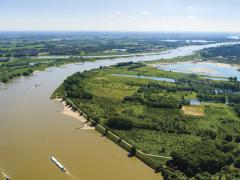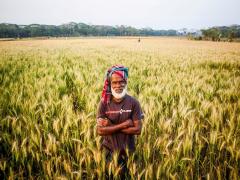Natural capital accounting for mainstreaming biodiversity in public policy
The World Bank WAVES programme supports several countries with the development of natural capital accounts (NCAs). NCAs link natural capital to a country’s system of national accounts and can also be applied to formulate biodiversity-related policies.
At the request of the WAVES programme, PBL has evaluated how NCAs are currently used in biodiversity-related policies. This report provides an overview of current and potential uses of natural capital accounting for biodiversity-related policy.
The list of potential uses of the accounts is long, with many types of accounts relevant for assessing the importance of biodiversity for economic production, wealth and human well-being, as well as the effects of various government policies on biodiversity. Which accounts are most relevant depends on the policy and the policy questions raised: the establishment and management of conservation areas; for policies on sustaining the supply of ecosystem services, building resilient ecosystems and safeguarding food supply from agricultural biodiversity, or for policies promoting the sustainable use of ecosystem services by economic actors.
The ecosystem extent accounts have many policy uses, as do the ecosystem services and ecosystem condition accounts, and, together, these can be used to assess the effectiveness of existing biodiversity-related policies. The species accounts are especially useful for determining the effectiveness of policies aimed to protect rare and endangered species. The water, mineral and forestry accounts from the SEEA Central Framework or the supply and use tables from the System of National Accounts can be relevant for policy questions related to the impacts of resource exploitation or economic activity on biodiversity.
The more advanced analytical approaches are not yet widely used, nor are analyses that combine multiple accounts to show synergies or trade-offs between biodiversity and economic changes, or changes in ecosystem resilience.
To more fully exploit the potential of ecosystem accounting, a number of issues should be addressed. These include:
- Integrating the accounts into national information systems and ensuring that the base data are regularly updated, just like the many other updates, such as on the economy and society, by statistical organisations.
- Ensuring demand-side guidance is provided to help policymakers and analysts understand how these accounts could be used. The list of possible accounts is long, and that of their possible applications for indicator development, analysis or policy use is even longer.
- Encouraging more practical experience in how the accounts could be used for trend analysis, econometric analysis, input-output analysis and bioeconomic modelling. Building the accounts is important, but actually using them is equally important, to provide insight into possible applications for policymakers. This requires external support for developing countries and closer cooperation between policymakers, account compilers and researchers in all countries.
Accounting can be used for implementing the National Biodiversity Strategy and Action Plans (NBSAPs) and refining existing or developing new strategies to conserve biodiversity. Maybe even more importantly, ecosystem accounting also shows the importance of biodiversity for the economy and can highlight the risks of biodiversity decline to the economy and human well-being, more generally. Finally, while there are challenges in producing biodiversity-related accounts, the work to date shows that producing them is possible and that the key task now is to embed biodiversity accounting into the machinery of government.
Authors
Specifications
- Publication title
- Natural capital accounting for mainstreaming biodiversity in public policy
- Publication date
- 13 December 2018
- Publication type
- Publication
- Publication language
- English
- Product number
- 3639




